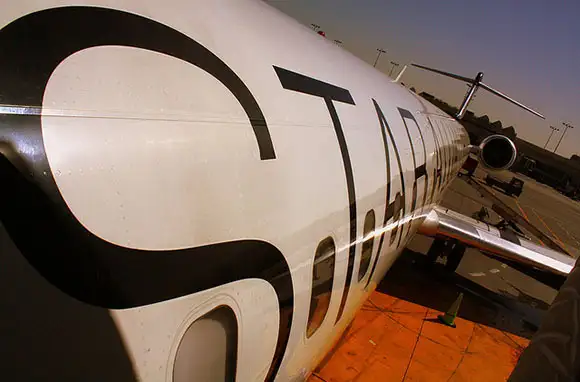
Traveling ’round the world (RTW) isn’t for everybody. A RTW trip takes more time and money than the average traveler might have. But for a fortunate few, it’s a great way to explore a range of destinations—new and old, exotic and mundane—that you might not ever be able to visit on individual trips.
My recommendations are based both on my own experience and reports from other travelers. I’ve done it four times—probably more than most. Two of the trips were for business, but the trips on my own provided great experiences. Here are 10 key lessons I learned while planning RTW travel.
Image Gallery

Figure Out the Basics
A good RTW trip requires a lot of planning, starting with making a list of what you really want to see and do. "Around the world" isn't a destination; it's a set of flights. Start by cataloguing your top must-visit places. The most popular RTW trips seem to be limited to North America, Europe, and Asia, although longer trips can also include the South Pacific, Africa, and South America.
Unless you're doing a full year abroad, spring and fall are often the best times to do RTW trips. During transitional seasons, you'll avoid the heat of the summer or the cold of the winter in both the northern and southern hemispheres. Of course, near-equator stops like Bangkok and Singapore are hot all the time.
On my latest RTW trip, I decided to travel in the spring. I started off with interesting places I had never been to, then I ended the journey with a relaxing stop in a longtime-favorite European area. But you could follow special interests, hook up with international friends you've made, visit the "10 most-something-or-other" destinations you saw on an intriguing list, or plan your trip based on just about anything.

Figure Out the Basics
A good RTW trip requires a lot of planning, starting with making a list of what you really want to see and do. "Around the world" isn't a destination; it's a set of flights. Start by cataloguing your top must-visit places. The most popular RTW trips seem to be limited to North America, Europe, and Asia, although longer trips can also include the South Pacific, Africa, and South America.
Unless you're doing a full year abroad, spring and fall are often the best times to do RTW trips. During transitional seasons, you'll avoid the heat of the summer or the cold of the winter in both the northern and southern hemispheres. Of course, near-equator stops like Bangkok and Singapore are hot all the time.
On my latest RTW trip, I decided to travel in the spring. I started off with interesting places I had never been to, then I ended the journey with a relaxing stop in a longtime-favorite European area. But you could follow special interests, hook up with international friends you've made, visit the "10 most-something-or-other" destinations you saw on an intriguing list, or plan your trip based on just about anything.

Take Enough Time
If you're going to be flying 25,000 miles or more—that's at least 50 hours in the air—you should spread it out a bit. My recommendation is to spend at least a month on the road; any less than that, and you're going to be in a state of perpetual jet lag. The longer the trip, the better you'll feel overall.

Give Each Stop Ample Time
Avoid too many short stops. These days, any single flight takes up most of a day, door to door: packing, checking out of your hotel, schlepping to an airport, going through the airport hassles. I have a tough time thinking of any destination worth visiting that you can cover in a single day. (That's one of the big problems with cruises.) You usually need at least a day to get a feel for a destination, then extra days to visit the sites you want to see and do the things you want to do. Even an itinerary full of one- or two-night stops will yield a trip centered on catching flights and checking in and out of hotels. Overall, my recommendation is a minimum of three nights per stop—or better yet, four.

Move in One Direction
You'll want to keep traveling generally in one direction, east or west. That's a requirement on some RTW tickets, but even if your ticket or tickets do not impose that requirement, you should do it anyway. Doubling back adds time and expense to your trip.
Most reports (and my own experience) show that traveling westward is easier on jet lag than traveling eastward. Extending a day is easier than compressing a day.

For Easy Booking, Get a Single Ticket
The easiest way to arrange a RTW itinerary is to buy a single-price RTW ticket. Only one airline, Air New Zealand, can fly RTW entirely on its own routes. But the itinerary is so limited that it's virtually worthless.
Each of the three big alliances, Oneworld, Skyteam, and Star Alliance, offers RTW tickets, and they provide user-friendly (if tedious) online RTW planners. Fares typically start at about $4,500 for up to 29,000 miles and limit you to Asia, Europe, and North America, with maybe a dip into North Africa or Central America. Expect to pay up to $7,000 for the 39,000 miles you'd need for an extensive trip that covers the South Pacific, South Africa, and South America.
RTW tickets typically require voyagers to complete travel within a year and are limited to 15 or 16 stops or flight segments. They also limit the number of stops or flights in any given region, and most RTW tickets limit you to a single stop in any city (unless you're making a connection).
Several less-inclusive airline partnerships also sell RTW tickets. Prices are somewhat lower than alliance tickets, but stops and routes are more limited.

To Save Money, Get Individual Tickets
For most RTW trips in economy class, you can cut the total cost a lot by buying individual tickets for each flight. Customizing a set of individual tickets is the cheapest way to do a RTW trip. You can arrange those flights through a specialist travel agency, or you can book them yourself through one of the big online metasearch systems. Individual tickets also provide ultimate flexibility on routes and stops—something you don't get when you have to confine yourself to the airlines in a single alliance.
One agency recently reported on a typical minimal RTW itinerary: Chicago–London–Milan–Istanbul–Delhi–Bangkok–Chicago, which was priced out at $1,547–$2,117 by several RTW specialist agencies for individual point-to-point tickets. By comparison, alliance RTW tickets cost $4,418–$4,710. Although you can buy your tickets online, RTW travel is one case where calling a real live agent is probably a better bet.

Fly Business Class
Spending 50 hours or more in a tiny, narrow economy seat with no legroom is not an attractive prospect for anyone. Individual tickets are prohibitively expensive for most travelers, but the alliance RTW business-class fares are about double economy fares—a lot, but nowhere near as pricey a premium as for individual tickets. A RTW business-class ticket can cost less than a simple round-trip on some routes.
A business-class ticket also gets you into premium lounges at most major world airports, along with no-charge checked baggage, preferred boarding, and sometimes express airport lanes. All in all, business class takes the stress out of flying like nothing else can.

Use Miles If You Have Them
All three big alliances offer RTW frequent-flyer awards in both economy and business class. In Star Alliance, the economy-class RTW award is 200,000 miles; requirements are similar on the others. The best way to use miles for RTW travel, however, is to use them for business class—provided, of course, that you have the miles. Star Alliance, for example, requires 350,000 miles for a RTW-travel award in business class.
My most recent RTW trip was in business class on Star Alliance, which I arranged when the requirement was at 280,000 miles. I was fortunate to have accumulated lots of miles over the years and was well pleased with the extravagance. And with miles worth just a tad more than one cent each, it was a real bargain compared with buying tickets. As a footnote, I had no problem booking every flight I wanted (except for the return flight to my hometown on United).

Don't Overlook the Paperwork
If your usual overseas haunts are in Europe or the Caribbean, it's easy to forget that lots of the countries you're likely to visit on a RTW trip require visas. With some, you can arrange a visa on arrival, but with others you have to apply in advance, the old-fashioned way. Check the State Department's information page for each country you plan to visit, and leave lots of time to complete the process. Those last-minute visa services can get the job done, but they're expensive.

Use All the Resources
BootsnAll, a self-styled RTW "community," is a good place to start. Several online agencies in the U.S. specialize in constructing RTW itineraries by booking individual flights. Among them are AirTreks, World Travellers' Club, AroundTheWorldTickets.com, and Ticketsroundtheworld.com. These websites have useful information even if you decide to book flights yourself.
You Might Also Like:
We hand-pick everything we recommend and select items through testing and reviews. Some products are sent to us free of charge with no incentive to offer a favorable review. We offer our unbiased opinions and do not accept compensation to review products. All items are in stock and prices are accurate at the time of publication. If you buy something through our links, we may earn a commission.
Related
Top Fares From
Today's Top Travel Deals
Brought to you by ShermansTravel
Shop and Save with Country Inns...
Patricia Magaña
 Hotel & Lodging Deals
Hotel & Lodging Deals
$229 -- Chicago: Discounted Rates and...
Francesca Miele
 Hotel & Lodging Deals
$229+
Hotel & Lodging Deals
$229+
$188 -- Honolulu: Save on Oceanview...
Abigail Lamay
 Hotel & Lodging Deals
$188+
Hotel & Lodging Deals
$188+



